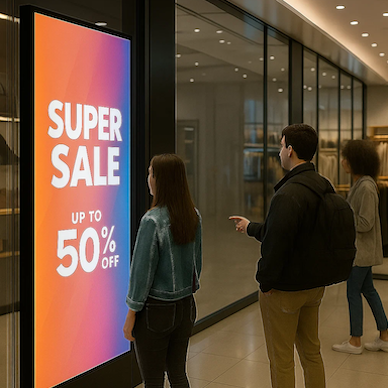Overcoming the Three Main Challenges with Using USB Devices for Digital Signage
Many businesses opt for USB devices as a cost-effective way to distribute content to their displays. However, there are three main challenges that organizations encounter when using USB devices for digital signage.
Digital signage, or the use of electronic displays to communicate messages, has become increasingly popular in various industries, such as retail, healthcare, and hospitality, to engage customers, patients, and guests. Many businesses opt for USB devices as a cost-effective and flexible way to distribute content to their displays. However, there are three main challenges that organizations may encounter when using USB devices for digital signage. In this blog post, we will explore these challenges and provide practical tips to overcome them.
Prone to Failure
First, one challenge with USB devices is that they are prone to failure. If a USB flash drive or hard drive fails, it can compromise the entire digital signage system. The root causes of USB failure may include physical damage, electrical issues, or software errors. To minimize the risk of USB failure, businesses should consider using more reliable devices built for more specific purposes. Additionally, if a USB device is used, it is vital to have a backup plan, such as storing content on a back up USB or local storage device, to ensure that displays can continue to function even if USB device fails.
Compatibility
Second, another challenge with USB devices is that they may not be compatible with all display types. USB devices rely on the display's hardware and software to read and play content. If the USB device and the display are not compatible, the content may not display correctly, if at all. This compatibility issue can often be solved by using standard file formats, such as JPEG, MP4, or PDF, that are supported by most displays. Also, businesses should make sure to verify the compatibility of USB devices with their digital signage software or content management system before deploying them.
Maintenance
A third challenge with USB devices is that they require manual updates and maintenance. If businesses need to update content on their displays frequently, they may find it time-consuming and cumbersome to physically swap USB devices in and out from different locations. Additionally, businesses may not be aware of USB device failures or content corruption unless they check the devices regularly. To address these challenges, businesses can consider using a digital signage platform that enables remote content updates and monitoring. These types of systems help ensure that displays are always up to date and functioning correctly.
Alternatives
While USB devices can be a cost-effective solution for digital signage, businesses need to be aware of the potential challenges they may encounter. To overcome USB failure, businesses should invest in more reliable devices and have a backup plan in place. To simplify content updates and maintenance, businesses can utilize specific digital signage hardware and software that enables remote management and monitoring of TV screen content. These platforms can help improve reliability, avoid screen outages, and increase audience engagement.
For more information about truDigital’s digital signage platform, contact us for a free demo today.
See it in Action
Get a free, no-pressure demo of our unique platform and find out how it can transform your business.









